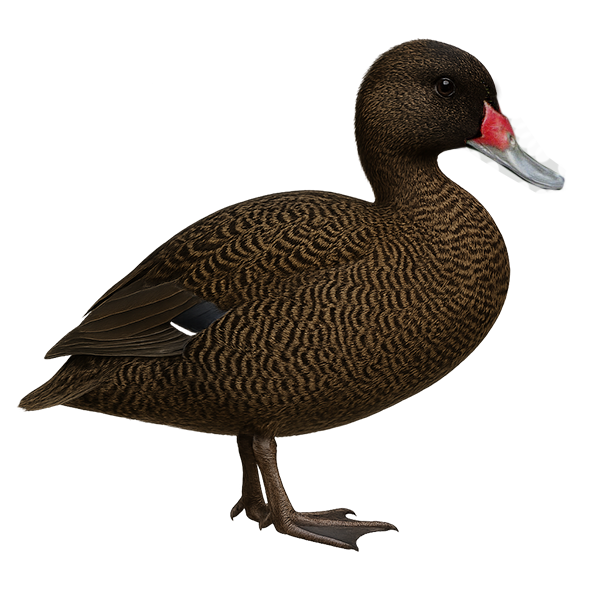Your wildlife photography guide.
Explore the freckled duck in detail, study its behavior, prepare your shots.
Where to observe and photograph the freckled duck in the wild
Learn where and when to spot the freckled duck in the wild, how to identify the species based on distinctive features, and what natural environments it inhabits. The WildlifePhotographer app offers tailored photography tips that reflect the freckled duck’s behavior, helping you capture better wildlife images. Explore the full species profile for key information including description, habitat, active periods, and approach techniques.
Freckled Duck
Scientific name: Stictonetta naevosa

IUCN Status: Least Concern
Family: ANATIDAE
Group: Birds
Sensitivity to human approach: Suspicious
Minimum approach distance: 10 m
Courtship display: August to November
Incubation: 28-30 jours
Hatchings: September to December
Habitat:
Lakes, marshes, rivers
Activity period :
Active at dawn and dusk, ideal moments for observation.
Identification and description:
The Freckled Duck, Stictonetta naevosa, is a waterfowl species endemic to Australia. Recognizable by its brown plumage speckled with white, it has a stocky build and a broad, flat bill. Males and females are similar, although males display a reddish bill during the breeding season. This duck prefers freshwater habitats such as lakes, marshes, and rivers, where it feeds mainly on aquatic plants and invertebrates. Although generally discreet, it can form small groups outside the breeding season. Its conservation status is concerning due to habitat loss and climate change, though it is not yet considered threatened.
Recommended lens:
400mm – adjust based on distance, desired framing (portrait or habitat), and approach conditions.
Photography tips:
To photograph the Freckled Duck, it is advisable to use a telephoto lens of at least 400mm to capture details without disturbing the bird. Approach slowly and discreetly, using surrounding vegetation as cover. The best times to observe and photograph this duck are early morning or late afternoon, when the light is soft and activity is at its peak. Favor calm water bodies to obtain interesting reflections and be patient to capture natural behaviors.
The WildlifePhotographer App is coming soon!
Be the first to explore the best nature spots, track rutting seasons, log your observations, and observe more wildlife.
Already 1 439 wildlife lovers subscribed worldwide

